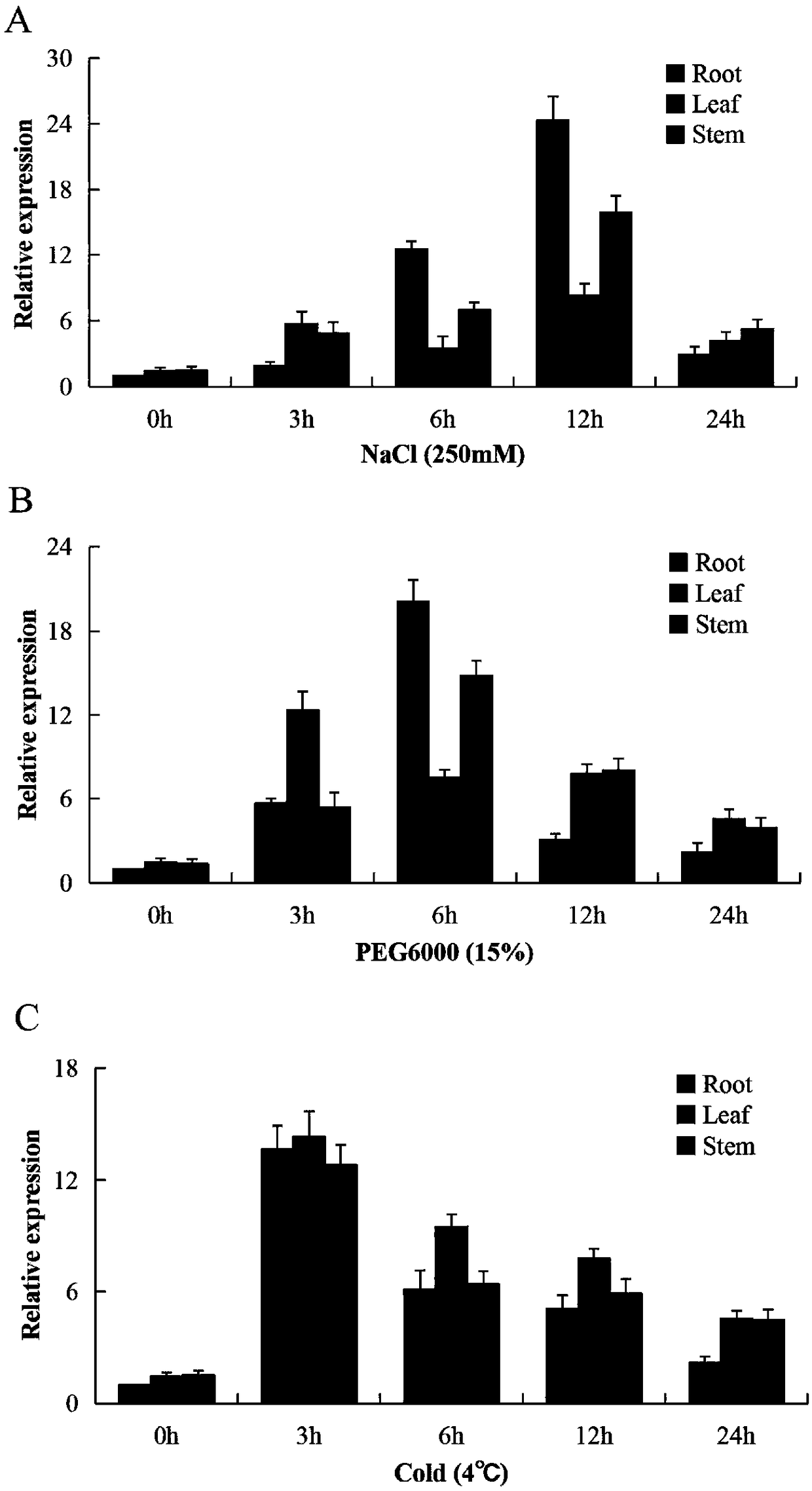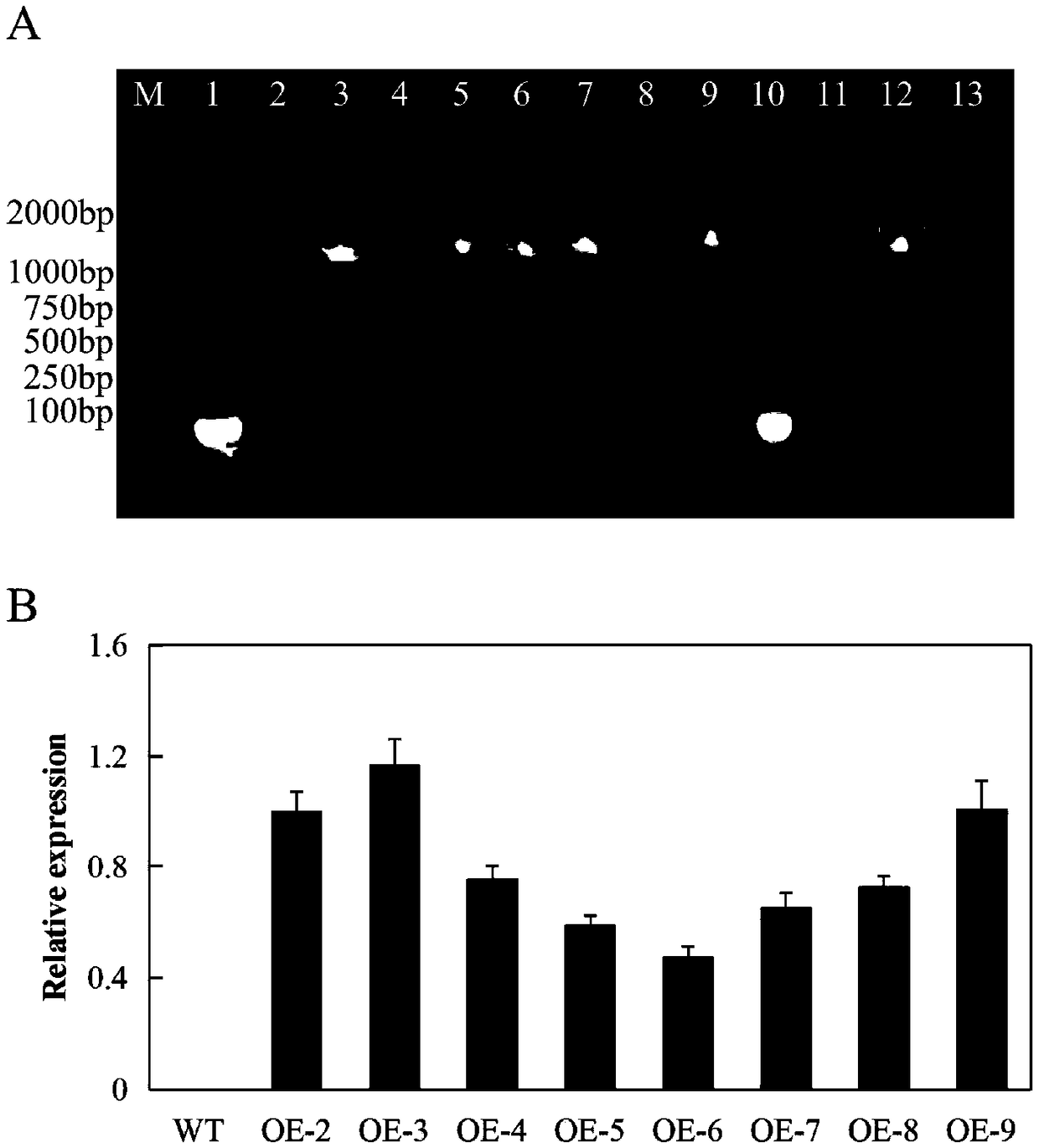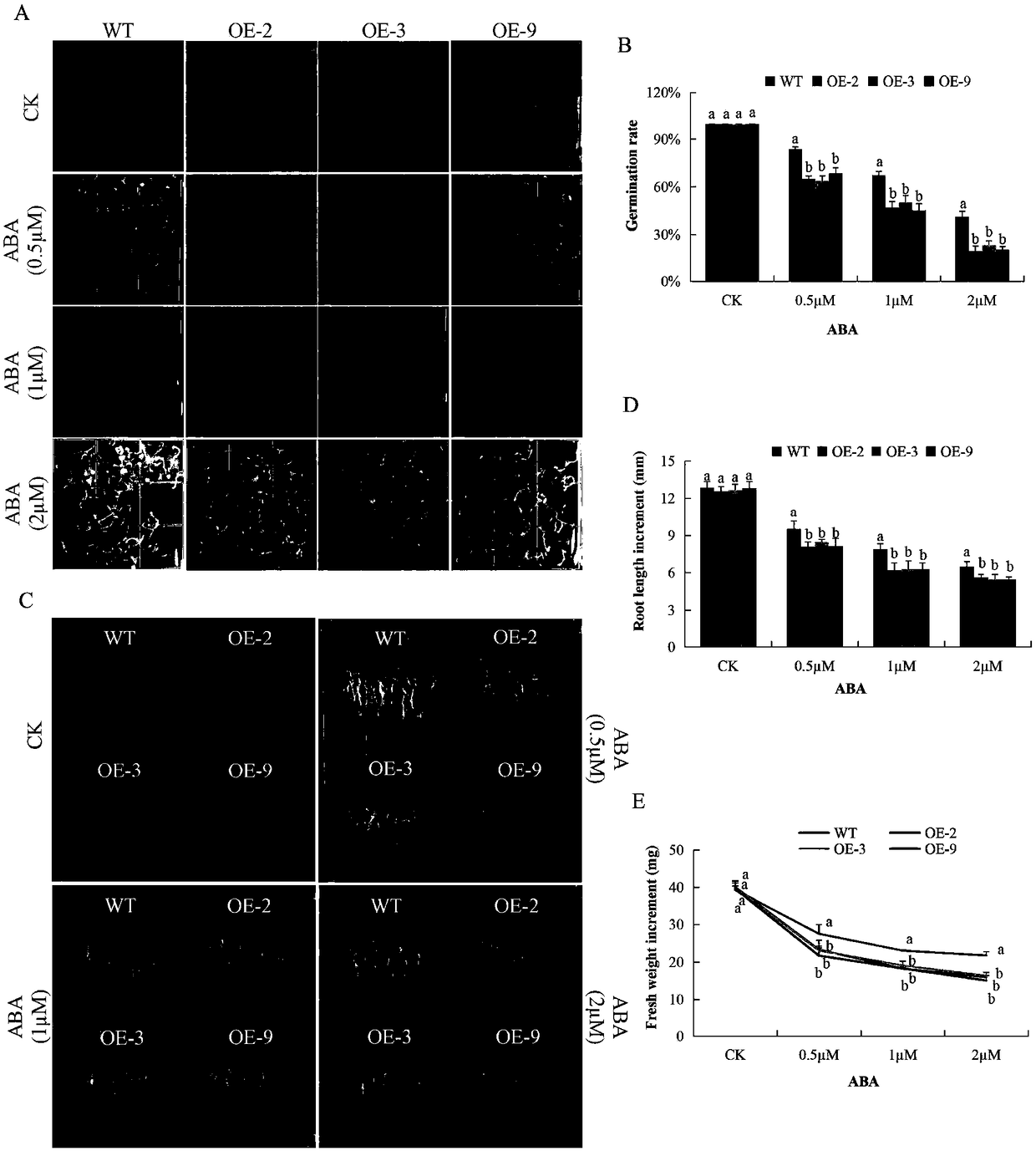Application of cotton gene GhDTX27 in plant salt, drought and cold stress tolerance
A technology of cold stress and genetics, applied in the field of genetic engineering
- Summary
- Abstract
- Description
- Claims
- Application Information
AI Technical Summary
Problems solved by technology
Method used
Image
Examples
Embodiment 1
[0024] Example 1 Plant Transformation and Overexpression GhDTX27 Arabidopsis Screening
[0025] Through specific primers (F: CGGATCCATGGATGGTGCCCATCGG (SEQ ID No.1); R: GGTCGACTCATTTCGCCCACCTTTTAAC (SEQ ID No.)), the target gene GhDTX27 was cloned, and pWM101-35S: GhDTX27 recombinant vector was constructed to transform Agrobacterium GV3101 competent cells, Wild-type Arabidopsis (Col-0) was infected by flower dipping method. The osmotic medium used for transformation contained MS 4.3 g / L, sucrose 50 g / l (5%), MES 0.5 g / l, Silwet-77 200 μl / l (0.02%), 6-BA 0.01 mg / l, pH 5.7. T0 transgenic lines were positively selected in 1 / 2MS medium containing 50mg / L hygromycin. In order to maximize the germination rate, the seedlings were first vernalized at 4°C for 3 days to break the seed dormancy, and then the seedlings were transferred to the light The incubator is set at 22°C, 16h light / 8h dark. After being cultivated in the selection medium for one week, when the seedlings develop to 3...
Embodiment 2
[0026] Embodiment 2 germination percentage and root elongation measure
[0027]Transgenic lines and wild-type Arabidopsis seeds were tested for tolerance to ABA, salt, drought and cold stress. The T3 generation seeds were sterilized, vernalized at 4°C, and sowed on 1 / 2MS solid medium containing 0, 0.5, 1, and 2 μM ABA, respectively, and 1 / 2MS containing 0, 100, 200, and 300 mM mannitol, respectively. Solid medium and 1 / 2MS solid medium containing 0, 100, 150, and 200 mM NaCl respectively, subjected to ABA, drought, and salt stress treatments, and 1 / 2MS seeded with transgenic homozygous lines and wild-type Arabidopsis The solid medium was placed at 4°C for cold stress treatment, and the germination rates of wild-type and transgenic lines were counted after 10 days.
[0028] Transgenic lines and wild-type Arabidopsis seedlings were tested for tolerance to ABA, salt, drought and cold stress. Seeds of transgenic homozygous lines and wild-type Arabidopsis thaliana were sterilized...
Embodiment 3
[0029] Example 3 Response of Arabidopsis overexpressing GhDTX27 to salt, drought and cold stress tolerance and determination of chlorophyll content, relative water content of leaves, ion conductivity, and dehydration of isolated leaves
[0030] The T3 homozygous transgenic line was sterilized with 10% bleach solution (v / v) for 10 min and washed 3 times with sterile water. The sterilized seeds were then plated on 1 / 2 MS medium, vernalized at 4°C for 3 days, and moved to a 22°C, 16h light / 8h dark photoperiod growth chamber. After 8 days, the seedlings were transplanted into small pots containing nutrient soil, wherein the mixing ratio of vermiculite and humus was 1:1. The seedlings grown for 3 weeks were treated with salt (250mM NaCl) and drought respectively. On the 8th day of treatment, the chlorophyll content, relative water content of leaves, and ion conductance of wild-type and transgenic Arabidopsis in the control group and treatment group were compared. The rate and dehy...
PUM
 Login to View More
Login to View More Abstract
Description
Claims
Application Information
 Login to View More
Login to View More - R&D
- Intellectual Property
- Life Sciences
- Materials
- Tech Scout
- Unparalleled Data Quality
- Higher Quality Content
- 60% Fewer Hallucinations
Browse by: Latest US Patents, China's latest patents, Technical Efficacy Thesaurus, Application Domain, Technology Topic, Popular Technical Reports.
© 2025 PatSnap. All rights reserved.Legal|Privacy policy|Modern Slavery Act Transparency Statement|Sitemap|About US| Contact US: help@patsnap.com



